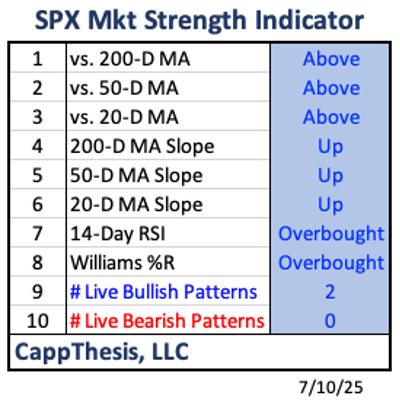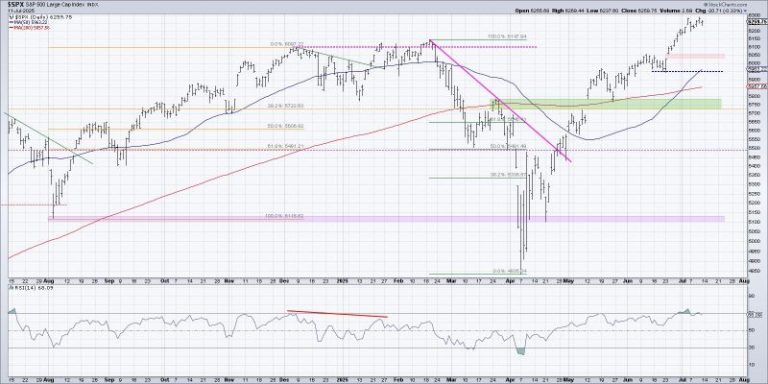NVIDIA (NASDAQ:NVDA) became the first publicly traded company to hit a US$4 trillion market cap this week.
Meanwhile, Apple (NASDAQ:AAPL) made headlines with a major leadership change as rumors of a lineup of upcoming product releases circulated, and Meta Platforms (NASDAQ:META) deepened ties with one of its hardware partners.
In the chip market, Huawei is trying to capitalize on the gap left by NVIDIA’s chips in China, while a startup is stepping up its efforts to help meet its ambitious plans to expand artificial intelligence (AI) chip delivery to Saudi Arabia.
1. Apple announces leadership shift
On Tuesday (July 8), Apple announced that Jeff Williams, its longtime chief operating officer, will retire at the end of 2025, ending a tenure that spanned decades and included overseeing hardware, software and operations.
“Jeff and I have worked alongside each other for as long as I can remember, and Apple wouldn’t be what it is without him,” said Apple CEO Tim Cook in a press release. “He’s helped to create one of the most respected global supply chains in the world; launched Apple Watch and overseen its development; architected Apple’s health strategy; and led our world-class team of designers with great wisdom, heart, and dedication.’
Williams will be succeeded by Sabih Khan, Apple’s senior vice president of operations, who has played a key role in managing Apple’s global supply chain.
In other Apple news, Bloomberg reported on Wednesday (July 9) that Apple plans to release its first hardware upgrade to the Vision Pro headset later this year. Anonymous sources say the upgrades will include a a new strap for added comfort, will incorporate the same M4 processor powering newer versions of the iPad Pro, MacBook Pri and iMac, and will incorporate a great number of cores in the neural engine to run AI more effectively.
The company is also working on a lighter version slated for release in 2027, according to the people.
The company is planning a series of product upgrades for the first half of 2026, including a new entry-level iPhone 17e, refreshed MacBook Pros and MacBook Airs with M5 chips and potentially a new external display, according to multiple reports this week. Entry-level iPad and iPad Air will reportedly also receive updates.
2. Meta makes eyewear bet
Meta acquired a nearly 3 percent stake in luxury eyewear maker EssilorLuxottica (EPA:EL), the creator of Ray-Bans and the manufacturing partner for Meta’s smart glasses, including the Ray-Ban Meta and Oakley Meta lines. This is according to a Tuesday report from Bloomberg that cites unnamed sources with knowledge of the matter.
The stake is reportedly worth around 3 billion euros. According to the people, Meta is considering increasing its stake to approximately 5 percent “over time,” but noted that the plans could change.
3. Huawei seeks to step in amid US restrictions
Huawei is reportedly developing a new class of AI chips designed to support more generalized AI workloads, according to the Information, which broke the news on July 5.
According to the report, Huawei’s chip will be built around an architecture resembling that of NVIDIA’s GPU architecture (like Hopper or Blackwell) and Advanced Micro Devices’ CDNA architecture (used in their Instinct GPUs), which would allow Chinese developers to seamlessly incorporate the alternative.
Huawei’s pivot reflects China’s broader effort to bolster domestic chip capabilities as export restrictions from the US limit its access to advanced semiconductors. NVIDIA’s highly sought-after Blackwell GPUs are difficult for Chinese developers to legally acquire, leading to the development of downgraded, China-specific versions and a drive by Chinese firms to secure the chips through other means or source high-end alternatives.
Illustrating these efforts, recent Bloomberg analysis reveals ambitious plans by Chinese companies to acquire over 115,000 high-end NVIDIA chips for dozens of new AI data centers rising in the remote desert regions of Yiwu.
4. Harmonic raises US$100 million for ‘Superintelligence’
Harmonic AI, a stealth-mode AI company co-founded by Robinhood (NASDAQ:HOOD) CEO Vlad Tenev, has raised US$100 million in a Series B funding round led by Kleiner Perkins. Sequoia Capital, Index Ventures and Paradigm also participated in the round, which brought the company’s valuation to US$875 million.
Founded in 2023 by Tenev and Tudor Achim, who previously led autonomous driving startup Helm.ai, the startup is focused on building “smarter” AI models using a concept it calls “Mathematical Superintelligence.’
Its flagship model, Aristotle, is being trained to generate answers grounded in formal mathematical logic. On Bloomberg News, Tenev has said the company’s goal was to build AI systems that can solve the type of complex math problems that currently elude chatbots, eventually expanding its capabilities to physics and computer science.
Harmonic also aims to eliminate chatbot hallucinations through formal verification, a mathematical method that guarantees correct AI system function.
The startup wants to make the model available to researchers and the general public later this year.
5. Groq seeks US$6 billion valuation to fuel Saudi AI ambitions
The Information reported on Wednesday that Groq, a US-based AI chip startup and challenger to NVIDIA, is seeking to raise between US$300 million and US$500 million in a new funding round that would value it at US$6 billion.
Groq’s language processing units (LPUs) are known for their fast inferencing technology.
Unlike general-purpose GPUs, which were originally made for graphics and then adapted for AI, Groq’s LPUs were designed specifically to process language.
According to the report, the funding would help Groq fulfill a US$1.5 billion deal to deliver advanced AI chips to Saudi Arabia. With its ambitious Vision 2030, Saudi Arabia is actively pursuing a role as a global AI and technology hub, driving its interest in obtaining cutting-edge chips.
Securities Disclosure: I, Meagen Seatter, hold no direct investment interest in any company mentioned in this article.










